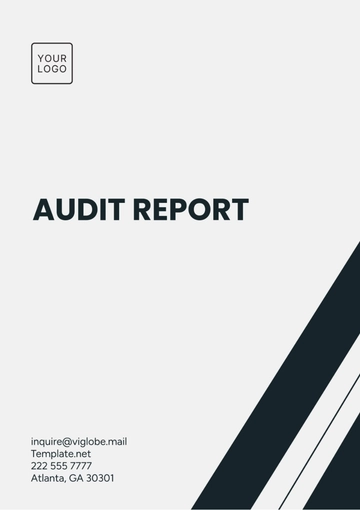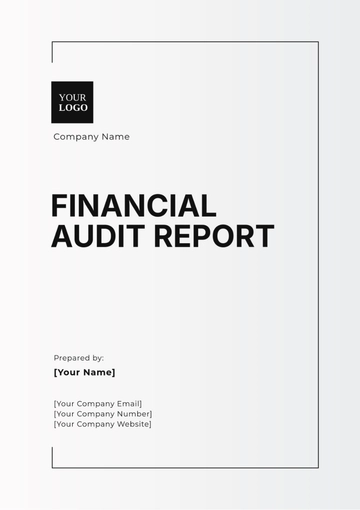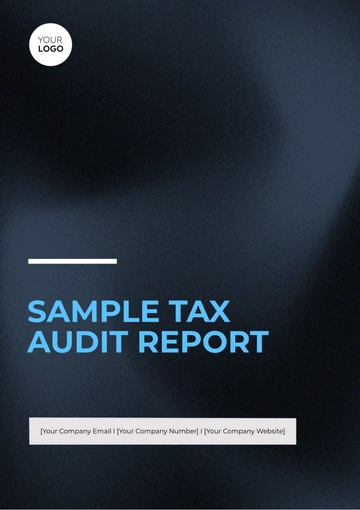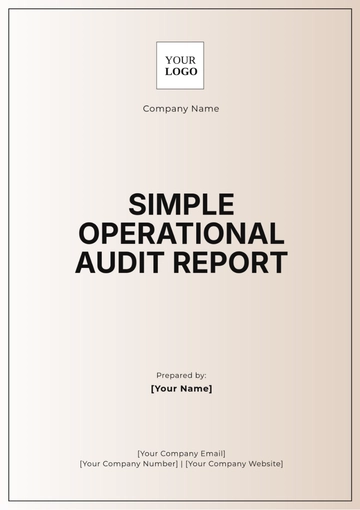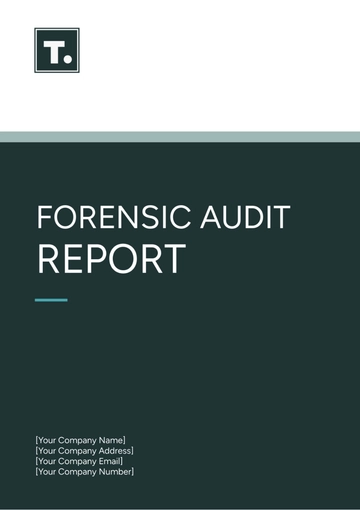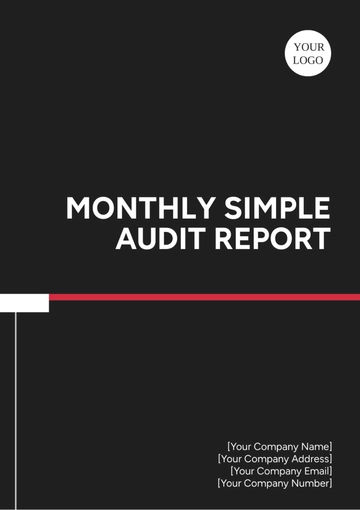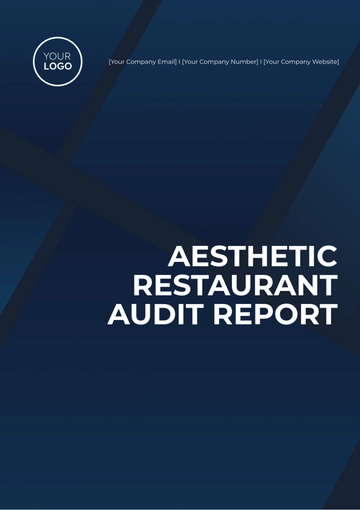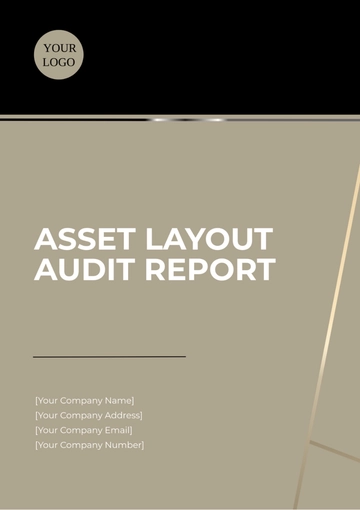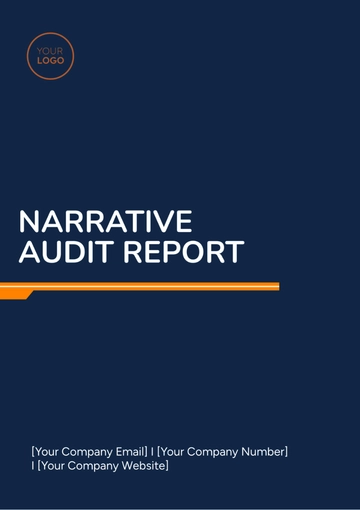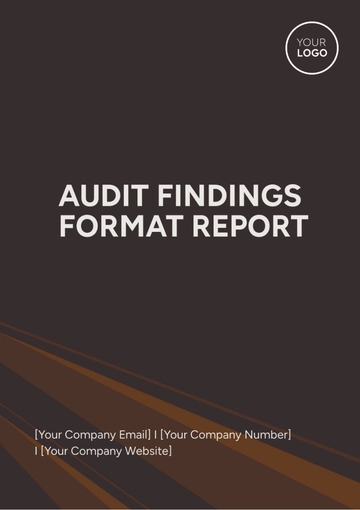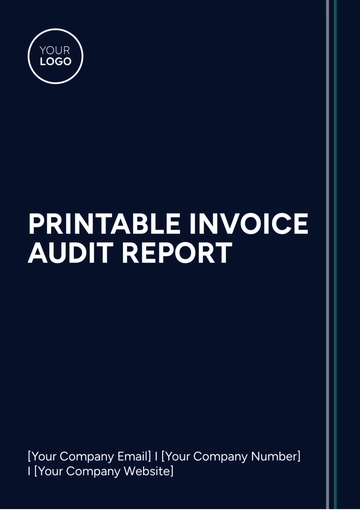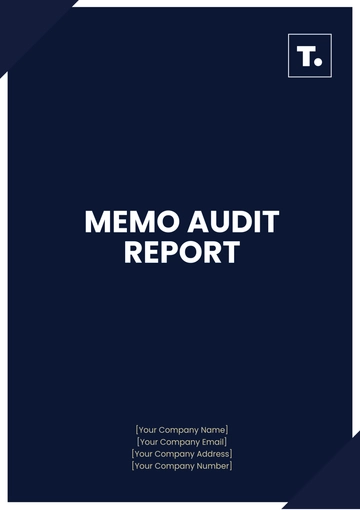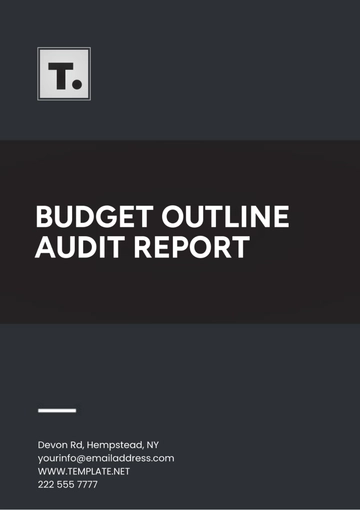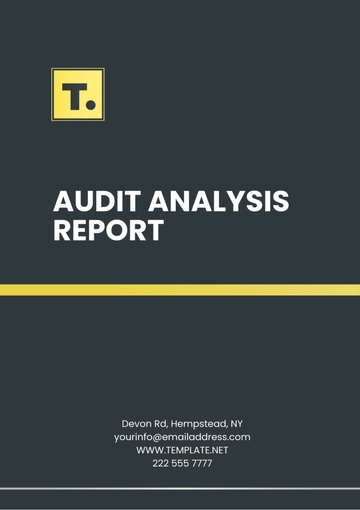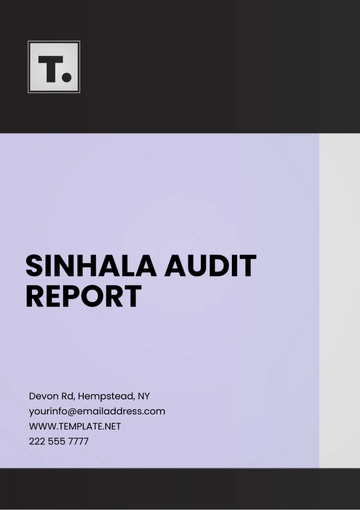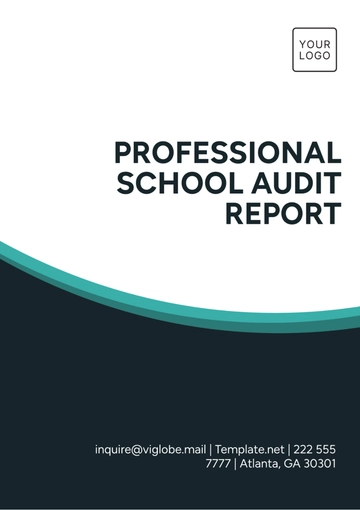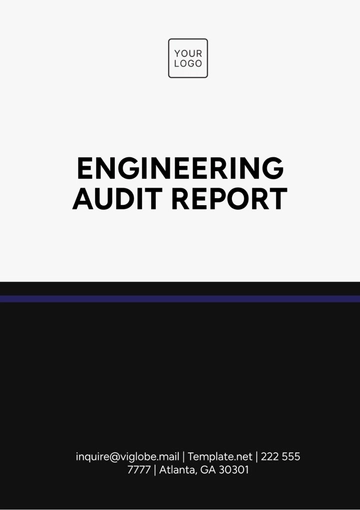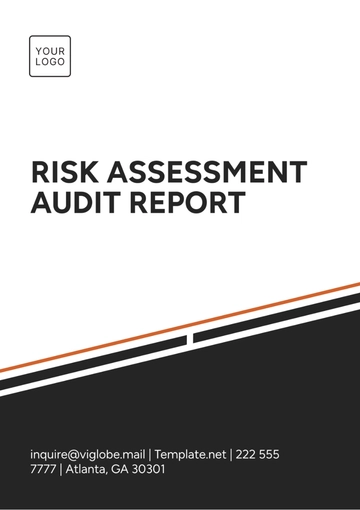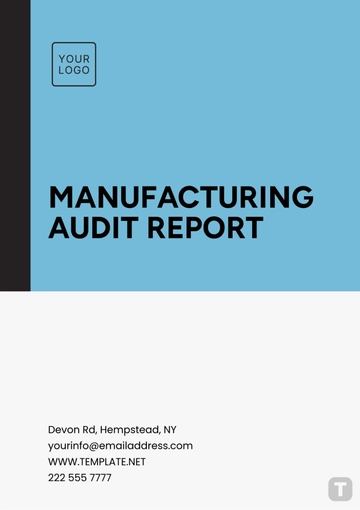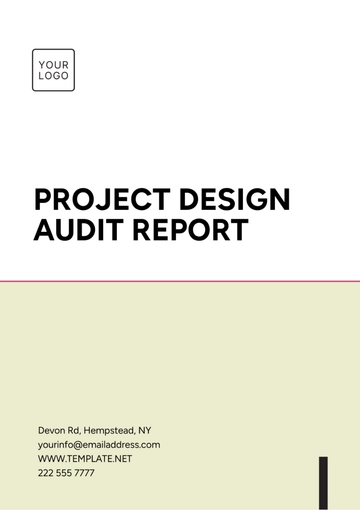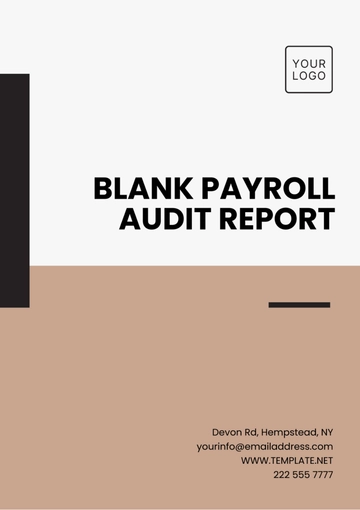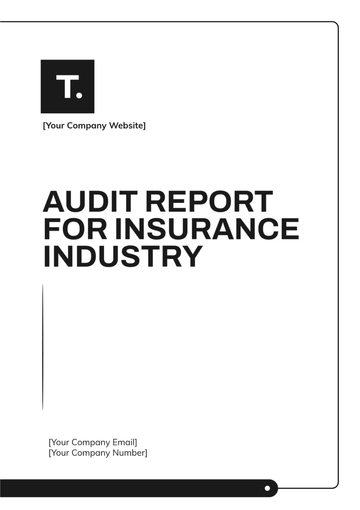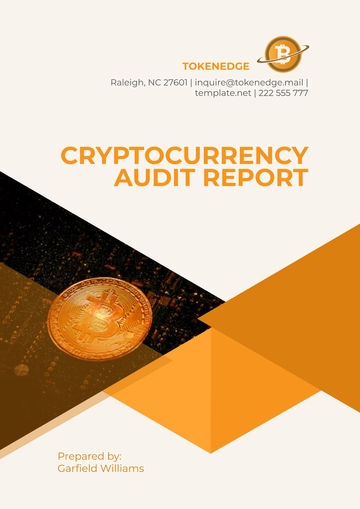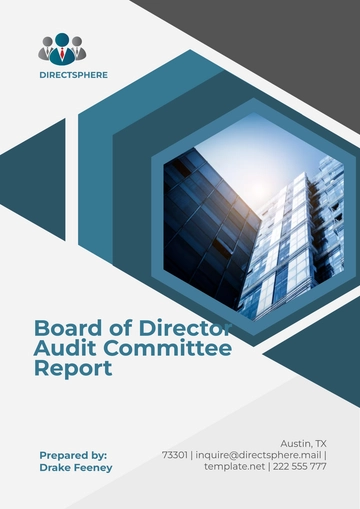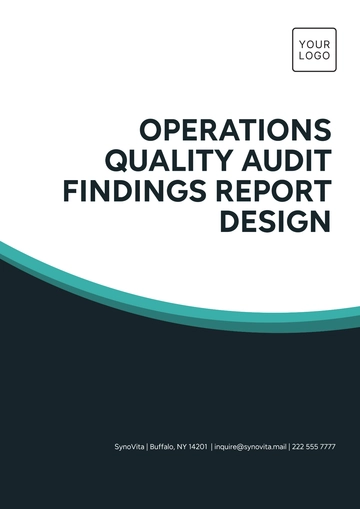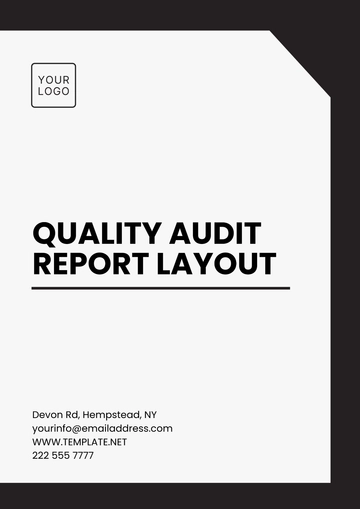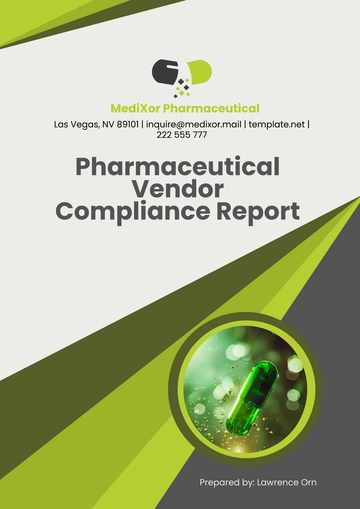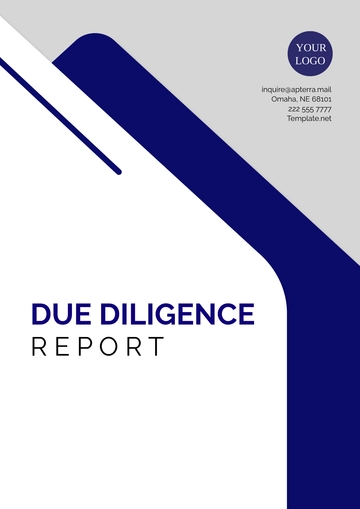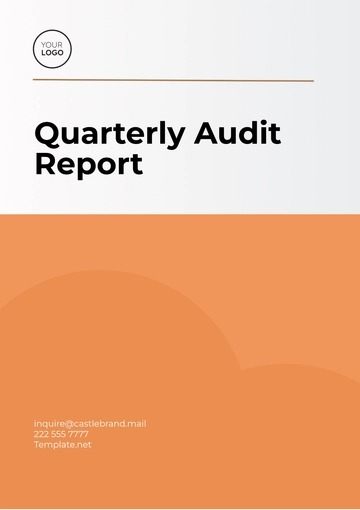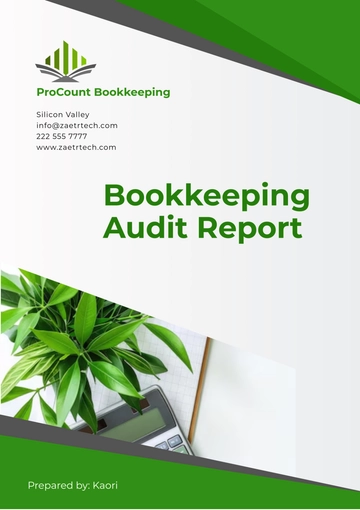Free Car Rental Audit Report
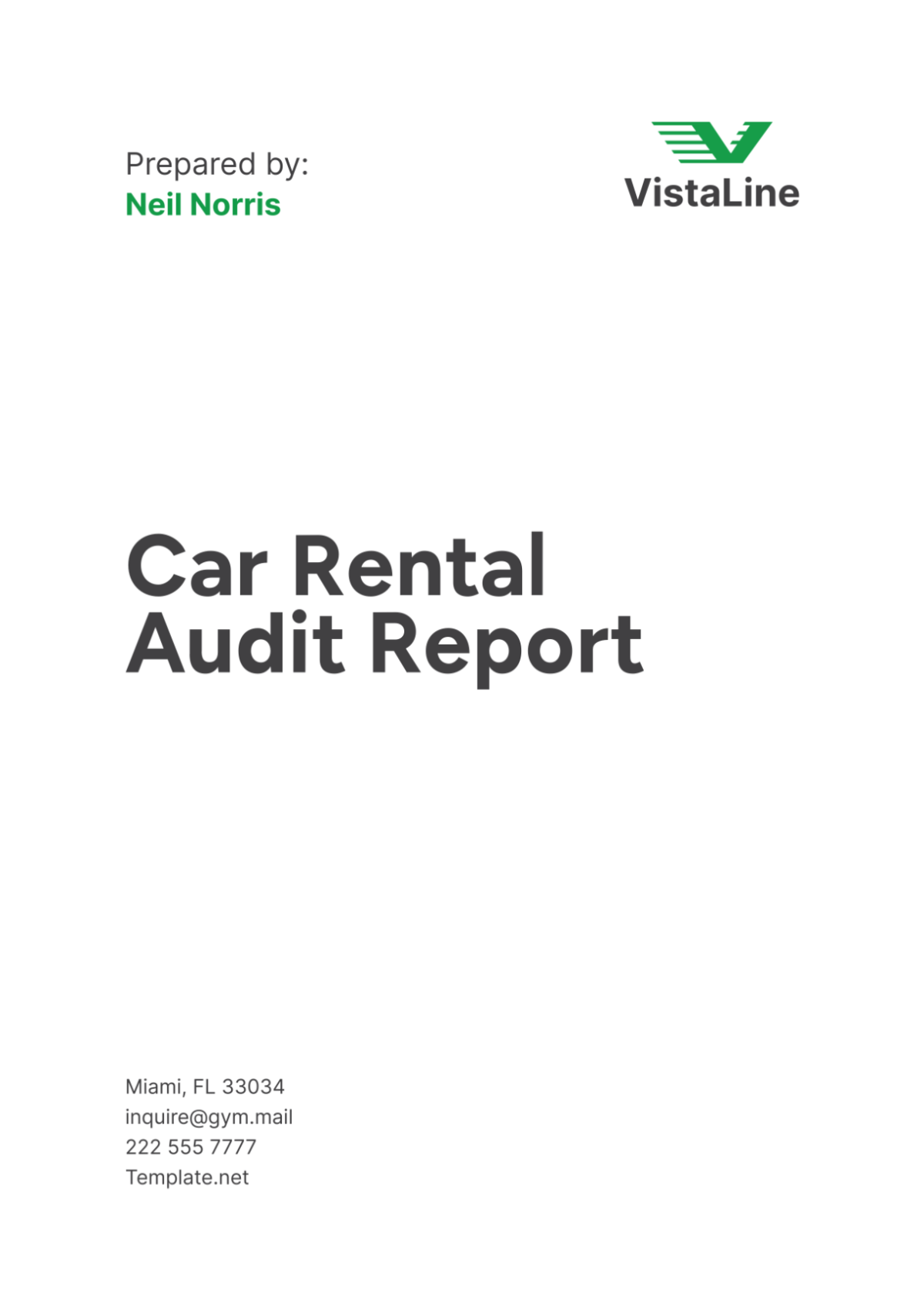
I. Overview
This Car Rental Audit Report for [Your Company Name] provides a comprehensive analysis of our rental operations, financial management, compliance with regulations, and risk management practices. The audit covers the period from [Month Day, Year], to [Month Day, Year], and aims to evaluate the efficiency and effectiveness of our processes. This report outlines the findings, observations, and recommendations to enhance our operations and ensure compliance with industry standards and regulations.
II. Executive Summary
The audit of [Your Company Name]'s car rental operations revealed several strengths and areas for improvement. Financial records were generally accurate, though some discrepancies were noted in revenue recognition. Operational processes were found to be efficient, but there is room for improvement in fleet utilization and customer service. Compliance with regulations was satisfactory, although some minor non-compliance issues were identified. Risk management practices were generally effective, but certain areas require further attention to mitigate potential risks. This report provides detailed findings and actionable recommendations to address these issues.
III. Audit Objectives
The primary objectives of this audit were to:
Assess the accuracy and completeness of financial records.
Evaluate the efficiency and effectiveness of rental operations.
Ensure compliance with applicable laws, regulations, and internal policies.
Identify potential risks and evaluate risk management practices.
Provide recommendations for improving financial accuracy, operational efficiency, compliance, and risk management.
IV. Scope of the Audit
A. Time Period Covered
The audit covers the financial year from [Month Day, Year], to [Month Day, Year]. This period was selected to provide a comprehensive review of annual operations and financial performance.
B. Locations Audited
The audit was conducted across the following key locations:
Headquarters: [Your Company Name] Main Office
Branch 1: Downtown Location
Branch 2: Airport Location
Branch 3: Suburban Location
These locations were chosen to represent a diverse range of operational environments and customer demographics.
C. Processes and Systems Audited
The audit focused on the following processes and systems:
Financial Management: | Including revenue recognition, expense tracking, and financial reporting. |
Rental Operations: | Covering vehicle rental processes, customer service, and fleet management. |
Compliance: | Ensuring adherence to industry regulations, safety standards, and internal policies. |
Risk Management: | Evaluating the identification, assessment, and mitigation of potential risks. |
V. Methodology
A. Data Collection Methods
The data for this audit was collected through various sources to ensure a comprehensive analysis. Key methods included:
Document Review: Financial records, rental agreements, and compliance documents were thoroughly reviewed to assess accuracy and completeness.
Interviews: Interviews were conducted with key personnel, including branch managers, financial officers, and customer service representatives, to gain insights into operational practices and identify areas for improvement.
Observations: On-site observations were made at each audited location to understand the practical implementation of processes and identify any deviations from standard procedures.
Customer Feedback: Customer feedback was analyzed to evaluate the quality of service and identify common issues faced by renters.
B. Audit Techniques
To ensure a thorough and accurate audit, the following techniques were employed:
Sampling: A sample of rental agreements, financial transactions, and compliance records was selected for detailed review. The sample was chosen to represent a cross-section of the entire data set, ensuring that findings were representative of overall operations.
Trend Analysis: Historical data was analyzed to identify trends and patterns in financial performance, rental activity, and compliance issues. This helped in understanding long-term operational dynamics and identifying potential areas of concern.
Variance Analysis: Variances between expected and actual performance were analyzed to identify discrepancies and understand their causes. This technique was particularly useful in financial reviews and operational assessments.
C. Audit Team
The audit was conducted by a team of experienced auditors with expertise in financial management, operational efficiency, compliance, and risk management. The team included:
Lead Auditor: [Name]
Financial Auditor: [Name]
Operational Auditor: [Name]
Compliance Auditor: [Name]
Risk Management Auditor: [Name]
The team worked collaboratively to ensure a comprehensive and objective audit, leveraging their combined expertise to provide actionable insights and recommendations.
VI. Audit Findings
A. Financial Review
The financial review focused on the accuracy and completeness of [Your Company Name]'s financial records, including revenue recognition, expense tracking, and financial reporting.
Revenue Recognition
A detailed analysis of revenue recognition practices revealed some discrepancies. While the majority of rental transactions were recorded accurately, a few instances of delayed revenue recognition were identified. These delays were primarily due to late submission of rental agreements from branch locations. To address this issue, it is recommended that a standardized process for timely submission and recording of rental agreements be implemented across all branches.
Expense Tracking
Expense tracking was generally accurate, with expenses being recorded in a timely manner. However, there were a few instances where supporting documentation for expenses was missing or incomplete. This lack of documentation can lead to difficulties in verifying the legitimacy of expenses and poses a risk of financial misstatement. It is recommended that a policy be implemented requiring all expenses to be supported by adequate documentation.
Financial Reporting
Financial reporting was found to be accurate and in compliance with applicable accounting standards. However, there were some areas for improvement in the clarity and detail of financial reports. Enhancing the level of detail in financial reports can provide better insights into financial performance and facilitate more informed decision-making.
B. Operational Efficiency
The operational review assessed the efficiency and effectiveness of rental processes, fleet management, and customer service.
Rental Processes
Rental processes were generally efficient, but there were some areas for improvement. The time taken to complete rental agreements varied significantly between branches, with some branches taking longer than others. Standardizing rental processes across all branches can help reduce these variations and improve overall efficiency.
Fleet Management
Fleet management practices were found to be effective, with vehicles being well-maintained and regularly serviced. However, there were some inefficiencies in fleet utilization. For example, some branches had a higher percentage of idle vehicles compared to others. Implementing a centralized system for tracking and managing fleet utilization can help optimize the use of vehicles and reduce idle time.
Customer Service
Customer service was generally satisfactory, but there were some common issues identified through customer feedback. The most frequent complaints were related to long wait times and unclear rental terms. To address these issues, it is recommended that additional training be provided to customer service representatives to improve their efficiency and clarity in communication.
C. Compliance Review
The compliance review focused on adherence to industry regulations, safety standards, and internal policies.
Regulatory Compliance
[Your Company Name] was found to be in compliance with most relevant regulations. However, there were some minor non-compliance issues related to vehicle registration and insurance documentation. These issues were primarily due to delays in updating records. Implementing a more robust system for tracking and updating regulatory compliance requirements can help address these issues.
Safety Standards
Safety standards were generally adhered to, with vehicles being regularly inspected and maintained. However, there were a few instances where safety inspection records were incomplete or missing. Ensuring that all safety inspections are thoroughly documented can help improve compliance with safety standards.
Internal Policies
Compliance with internal policies was satisfactory, but there were some areas for improvement. For example, there were some inconsistencies in the application of discount policies across branches. Standardizing the application of internal policies can help ensure consistency and fairness across all branches.
D. Risk Management
The risk management review evaluated the identification, assessment, and mitigation of potential risks.
Risk Identification
[Your Company Name] has a robust system for identifying potential risks, with regular risk assessments being conducted. However, there were some areas where risk identification could be improved. For example, some operational risks, such as vehicle theft and damage, were not adequately addressed in risk assessments. Enhancing the scope of risk assessments to include all potential risks can help improve risk identification.
Risk Assessment
Risk assessment practices were generally effective, with risks being evaluated based on their likelihood and impact. However, there were some inconsistencies in the assessment of financial risks. Standardizing risk assessment criteria can help ensure a more consistent and accurate evaluation of risks.
Risk Mitigation
Risk mitigation practices were found to be generally effective, with appropriate measures being implemented to address identified risks. However, there were some areas for improvement in the implementation of risk mitigation measures. For example, some branches were not fully compliant with risk mitigation procedures. Ensuring that all branches adhere to risk mitigation procedures can help improve overall risk management.
VII. Detailed Findings and Observations
A. Financial Discrepancies
A detailed analysis of financial discrepancies revealed several key issues. These discrepancies were primarily related to revenue recognition and expense tracking.
Revenue Recognition
The table below provides a summary of the discrepancies identified in revenue recognition.
Branch Location | Number of Discrepancies | Total Amount ($) |
|---|---|---|
Headquarters | 5 | 10,000 |
Downtown | 3 | 6,000 |
Airport | 7 | 15,000 |
Suburban | 4 | 8,000 |
Total | 19 | 39,000 |
These discrepancies were primarily due to the delayed submission of rental agreements and the incorrect recording of rental transactions. Implementing a standardized process for timely submission and recording of rental agreements can help address these issues.
Expense Tracking
The table below provides a summary of the discrepancies identified in expense tracking.
Branch Location | Number of Discrepancies | Total Amount ($) |
|---|---|---|
Headquarters | 2 | 5,000 |
Downtown | 1 | 2,000 |
Airport | 3 | 7,000 |
Suburban | 2 | 4,000 |
Total | 8 | 18,000 |
These discrepancies were primarily due to missing or incomplete documentation for expenses. Implementing a policy requiring all expenses to be supported by adequate documentation can help address these issues.
B. Operational Inefficiencies
The detailed analysis of operational inefficiencies identified several key areas for improvement.
Rental Processes
The table below provides a summary of the time taken to complete rental agreements at each branch location.
Branch Location | Average Time (Minutes) | Standard Deviation (Minutes) |
|---|---|---|
Headquarters | 20 | 5 |
Downtown | 25 | 7 |
Airport | 15 | 4 |
Suburban | 30 | 8 |
Standardizing rental processes across all branches can help reduce variations in the time taken to complete rental agreements and improve overall efficiency.
Fleet Management
The table below provides a summary of fleet utilization at each branch location.
Branch Location | Total Vehicles | Idle Vehicles | Utilization Rate (%) |
|---|---|---|---|
Headquarters | 100 | 20 | 80 |
Downtown | 80 | 15 | 81.25 |
Airport | 120 | 30 | 75 |
Suburban | 90 | 25 | 72.22 |
Implementing a centralized system for tracking and managing fleet utilization can help optimize the use of vehicles and reduce idle time.
C. Compliance Issues
The detailed analysis of compliance issues identified several key areas for improvement.
Regulatory Compliance
The table below provides a summary of the non-compliance issues related to vehicle registration and insurance documentation.
Branch Location | Number of Issues | Type of Issue |
|---|---|---|
Headquarters | 3 | Delayed registration updates |
Downtown | 2 | Missing insurance documents |
Airport | 4 | Incomplete registration |
Suburban | 2 | Delayed insurance updates |
Implementing a more robust system for tracking and updating regulatory compliance requirements can help address these issues.
Safety Standards
The table below provides a summary of the safety inspection records at each branch location.
Branch Location | Total Inspections | Incomplete Records | Missing Records |
|---|---|---|---|
Headquarters | 50 | 5 | 3 |
Downtown | 40 | 3 | 2 |
Airport | 60 | 7 | 4 |
Suburban | 45 | 4 | 2 |
Ensuring that all safety inspections are thoroughly documented can help improve compliance with safety standards.
D. Risk Areas
The detailed analysis of risk areas identified several key areas for improvement.
Operational Risks
The table below provides a summary of the operational risks identified at each branch location.
Branch Location | Risk Type | Likelihood (1-5) | Impact (1-5) |
|---|---|---|---|
Headquarters | Vehicle theft | 3 | 4 |
Downtown | Vehicle damage | 2 | 3 |
Airport | Rental fraud | 4 | 5 |
Suburban | Vehicle vandalism | 2 | 3 |
Enhancing the scope of risk assessments to include all potential risks can help improve risk identification.
VIII. Recommendations
A. Financial Improvements
Based on the findings, several recommendations are provided to improve financial accuracy and compliance.
Revenue Recognition
Implementing a standardized process for the timely submission and recording of rental agreements can help address discrepancies in revenue recognition. Additionally, regular training sessions should be conducted for branch managers to ensure they are aware of the importance of accurate revenue recording.
Expense Tracking
To address issues in expense tracking, it is recommended that a policy be implemented requiring all expenses to be supported by adequate documentation. Regular audits should be conducted to ensure compliance with this policy.
B. Operational Enhancements
Several recommendations are provided to improve operational efficiency and customer service.
Rental Processes
Standardizing rental processes across all branches can help reduce variations in the time taken to complete rental agreements. This can be achieved by implementing a set of best practices for rental processes and providing training to branch staff.
Fleet Management
Implementing a centralized system for tracking and managing fleet utilization can help optimize the use of vehicles and reduce idle time. This system should provide real-time data on vehicle availability and utilization rates.
C. Compliance Measures
Several recommendations are provided to improve compliance with regulations and internal policies.
Regulatory Compliance
Implementing a more robust system for tracking and updating regulatory compliance requirements can help address issues related to vehicle registration and insurance documentation. Regular audits should be conducted to ensure compliance with regulatory requirements.
Safety Standards
Ensuring that all safety inspections are thoroughly documented can help improve compliance with safety standards. This can be achieved by implementing a standardized process for documenting safety inspections and conducting regular audits to ensure compliance.
D. Risk Mitigation Strategies
Several recommendations are provided to improve risk management practices.
Risk Identification and Assessment
Enhancing the scope of risk assessments to include all potential risks can help improve risk identification. This can be achieved by conducting regular risk assessments and updating risk registers to include new risks as they are identified.
Risk Mitigation
Ensuring that all branches adhere to risk mitigation procedures can help improve overall risk management. This can be achieved by implementing a set of best practices for risk mitigation and providing training to branch staff.
IX. Action Plan
A. Implementation Steps
To implement the recommendations provided in this report, several steps need to be taken.
Step 1: Develop a Standardized Process for Revenue Recognition
A standardized process for timely submission and recording of rental agreements should be developed and implemented across all branches. This process should include clear guidelines on the submission and recording of rental agreements.
Step 2: Implement a Policy for Expense Documentation
A policy requiring all expenses to be supported by adequate documentation should be developed and implemented. This policy should include clear guidelines on the type of documentation required for different types of expenses.
Step 3: Standardize Rental Processes
A set of best practices for rental processes should be developed and implemented across all branches. This should include clear guidelines on the time taken to complete rental agreements and the steps involved in the rental process.
Step 4: Develop a Centralized Fleet Management System
A centralized system for tracking and managing fleet utilization should be developed and implemented. This system should provide real-time data on vehicle availability and utilization rates.
Step 5: Enhance Compliance Tracking
A more robust system for tracking and updating regulatory compliance requirements should be developed and implemented. This system should include regular audits to ensure compliance with regulatory requirements.
Step 6: Document Safety Inspections
A standardized process for documenting safety inspections should be developed and implemented. This process should include clear guidelines on the type of documentation required for safety inspections.
Step 7: Conduct Regular Risk Assessments
Regular risk assessments should be conducted to identify and assess potential risks. This should include updating risk registers to include new risks as they are identified.
B. Timeline for Implementation
The table below provides a timeline for the implementation of the recommendations provided in this report.
Action Item | Responsible Party | Start Date | Completion Date |
|---|---|---|---|
Develop Standardized Process for Revenue Recognition | Finance Team | ||
Implement Policy for Expense Documentation | Finance Team | ||
Standardize Rental Processes | Operations Team | ||
Develop Centralized Fleet Management System | IT Team | ||
Enhance Compliance Tracking | Compliance Team | ||
Document Safety Inspections | Safety Team | ||
Conduct Regular Risk Assessments | Risk Management Team |
C. Monitoring and Evaluation
To ensure the effective implementation of the recommendations, regular monitoring and evaluation should be conducted. This should include:
Monthly progress reports to track the implementation of recommendations
Quarterly audits to assess compliance with new policies and processes
Annual risk assessments to update risk registers and identify new risks
X. Conclusion
The audit of [Your Company Name]'s car rental operations revealed several areas for improvement, including financial accuracy, operational efficiency, compliance with regulations, and risk management practices. By implementing the recommendations provided in this report, [Your Company Name] can enhance its financial accuracy, improve operational efficiency, ensure compliance with regulations, and strengthen its risk management practices.
Regular monitoring and evaluation will be crucial to ensure the effective implementation of these recommendations and to identify any new issues that may arise. With these improvements, [Your Company Name] can continue to provide high-quality car rental services to its customers while maintaining financial and operational stability.
- 100% Customizable, free editor
- Access 1 Million+ Templates, photo’s & graphics
- Download or share as a template
- Click and replace photos, graphics, text, backgrounds
- Resize, crop, AI write & more
- Access advanced editor
Prepare a comprehensive audit report with Template.net's customizable and editable Car Rental Audit Report Template. Leverage the AI Editor Tool to document audit findings and recommendations. This user-friendly template ensures professional and thorough audit reporting, enhancing transparency and compliance.
You may also like
- Sales Report
- Daily Report
- Project Report
- Business Report
- Weekly Report
- Incident Report
- Annual Report
- Report Layout
- Report Design
- Progress Report
- Marketing Report
- Company Report
- Monthly Report
- Audit Report
- Status Report
- School Report
- Reports Hr
- Management Report
- Project Status Report
- Handover Report
- Health And Safety Report
- Restaurant Report
- Construction Report
- Research Report
- Evaluation Report
- Investigation Report
- Employee Report
- Advertising Report
- Weekly Status Report
- Project Management Report
- Finance Report
- Service Report
- Technical Report
- Meeting Report
- Quarterly Report
- Inspection Report
- Medical Report
- Test Report
- Summary Report
- Inventory Report
- Valuation Report
- Operations Report
- Payroll Report
- Training Report
- Job Report
- Case Report
- Performance Report
- Board Report
- Internal Audit Report
- Student Report
- Monthly Management Report
- Small Business Report
- Accident Report
- Call Center Report
- Activity Report
- IT and Software Report
- Internship Report
- Visit Report
- Product Report
- Book Report
- Property Report
- Recruitment Report
- University Report
- Event Report
- SEO Report
- Conference Report
- Narrative Report
- Nursing Home Report
- Preschool Report
- Call Report
- Customer Report
- Employee Incident Report
- Accomplishment Report
- Social Media Report
- Work From Home Report
- Security Report
- Damage Report
- Quality Report
- Internal Report
- Nurse Report
- Real Estate Report
- Hotel Report
- Equipment Report
- Credit Report
- Field Report
- Non Profit Report
- Maintenance Report
- News Report
- Survey Report
- Executive Report
- Law Firm Report
- Advertising Agency Report
- Interior Design Report
- Travel Agency Report
- Stock Report
- Salon Report
- Bug Report
- Workplace Report
- Action Report
- Investor Report
- Cleaning Services Report
- Consulting Report
- Freelancer Report
- Site Visit Report
- Trip Report
- Classroom Observation Report
- Vehicle Report
- Final Report
- Software Report
